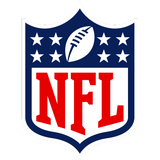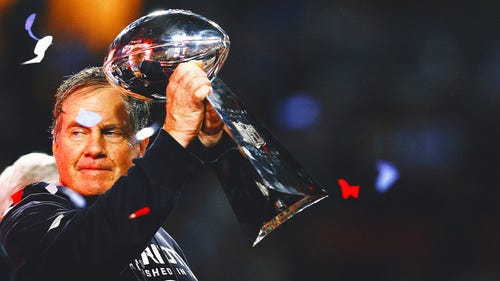
NFL season jumpstarts the economy
When the NFL and players struck a deal to end the league's lockout, they didn't just save the football season that begins its first full day of games on Sunday. They saved the most profitable sport in America, the most popular show on TV and billions of dollars that would have disappeared from the economy.
During the regular season, the National Football League itself expects to take in about $9.5 billion. The league estimates that sponsorship revenue alone, which is included in that figure, will be up 15 percent from last year.
But the impact of the 10-year labor agreement the league reached in July to end a four-mouth lockout reaches far beyond the NFL's big corporate sponsors, billionaire owners and millionaire players. The league supports about 110,000 jobs in NFL cities- not just tailbacks and punters but hotel workers and sports-bar owners. Overall, the games add about $5 billion to the broader economy in NFL cities, according to an analysis prepared for the NFL Players Association by Edgeworth Economics.
Now, NFL cities, advertisers, restaurants and bars are preparing for the seasonal economic windfall that comes with the football season.
''It's the game we most care about,'' said Rick Burton, a sports marketing professor at Syracuse University. ''The largest number of Americans would probably say they have some level of affinity or passion for NFL football.''
Here's a look at some of the economic ripples:
---
AN NFL CITY ON GAME DAY: `INSANE'
Downtown Cleveland is hopping on weekends when the Browns play at home. Fans of the home team - and of the visitors, especially when the rival Pittsburgh Steelers are in town - start packing hotels Saturday night. And the partying spills over into city's historic Warehouse District and bars near the stadium.
''Game days are insane,'' says Alice Burns, assistant manager and bartender at Bob Golic's Sports Bar & Grille, owned by a former Browns star. ''Last season, we opened at 7 a.m. and were completely packed by 9 or 10.''
Game-day sales ''keep us going all year,'' she says. ''It's pretty slow summertimes.''
Business at John Q's Steakhouse multiplies by five on Browns' game days, says owner Rick Cassara. ''It means everything to us,'' he says. ''Everybody downtown does well on a Browns Sunday.'' When the Browns are playing, he doubles his staff, putting an extra 12 to 15 servers, bartenders and cooks to work.
Positively Cleveland, which promotes tourism to the city, estimated four years ago that every Browns game brought $7.9 million in business to Cleveland - $63 million a year. ''No matter how the Browns are doing,'' says Tamera Brown, the group's vice president of marketing, ''they still sell out.''
The Browns' appeal and economic clout extend far beyond Ohio's borders. Every game day, around 100 Browns fans descend on the Box Seat sports bar in Hermitage, Tenn., outside Nashville.
''I usually bring my wife and two kids, and we spend around $20 to $30 on food,'' says Kristopher Martel, 26, a software developer in Murfreesboro, Tenn.
------
AT METLIFE STADIUM: CONCESSION WORKERS BACK IN BUSINESS
At Metlife Stadium in East Rutherford, N.J. - the home of the Jets and the Giants that formerly the New Meadowlands Stadium - 80 employees at the complex are full-time and guaranteed a paycheck. The rest are event employees who had feared that, without football, they'd be out of work.
Tallying up parking attendants, security guards, ushers, ticket takers, janitors, merchandise sellers and concession workers, the stadium employs about 4,000 people on any given NFL Sunday, says Mark Lamping, the stadium's CEO. Without football games in the fall and winter, those people don't work, Lamping says.
Concessions at the stadium are managed by a company called Delaware North, which has been stuffing NFL fans full of hot dogs and beer for more than 45 years and has weathered player strikes.
Delaware North also does concessions for the Buffalo Bills, Chicago Bears, Cleveland Browns, Carolina Panthers and St. Louis Rams. The company's payroll for staffing the six stadiums is $24 million. Then there are the food, plate and cup suppliers who count on Delaware North's orders to stay in business.
''Everyone was on pins and needles,'' says Rick Abramson, president of Delaware North's Sportservice unit, who started his career as a vendor at Milwaukee County Stadium 40 years ago. ''A missed season would be a problem for a lot of people because they're counting on that money to make ends meet.''
While Jets wide receiver Santonio Holmes was angling for a contract that reportedly will guarantee him $50 million over five years, veteran beer vendors were hoping they wouldn't lose the supplemental income they count on six months out of the year. They take home about $150 per game, plus tips and commission.
Overall, Delaware North takes in about $100 million per year from food and drink sales at NFL events. The company also employs about 30,000 seasonal workers.
''It's a great thing that they were able to resolve it,'' says Delaware North owner Jerry Jacobs Jr. of the players' agreement. ''There was so much at stake.''
---
ON TV: A `HALO EFFECT' IRRESISTIBLE FOR NETWORKS
Remember the controversial Snickers ad in which two mechanics eat the same candy bar from different ends and wind up kissing in the style of Lady and the Tramp? So does the rest of America.
That's because it aired during the Super Bowl, the most coveted television event for advertisers who want to get their products noticed.
Last year, the Super Bowl aired on Fox and set a record by attracting 111 million viewers, more than any other single telecast, according to Nielsen's list of the year's top 10 programs. The second and third most-watched events were - wait for it - the postgame and pregame shows.
The NFL divisional playoff games rounded out the top five. In fact, excepting the Oscars and an episode of ''Undercover Boss'', the top 10 highest rated shows were all football.
The higher a show's rating, the more money ad time fetches. So it's no surprise that NFL programming generates $3.2 billion in advertising revenue for TV networks, according to data from Kantar Media. No other event gives advertisers as much exposure - one reason Bud Light is paying $1.2 billion to be the NFL's official beer sponsor over the next six years.
''For advertisers that are targeting men - and increasingly targeting women - the NFL provides great demographics,'' said Burton, the Syracuse professor.
A canceled football season would have left companies from PepsiCo to Procter & Gamble scrambling to reinvest their ad dollars in other programs. The problem: with broadcast ratings down generally, there are already ''too many ad dollars chasing a smaller inventory of viewers,'' said Nomura analyst Michael Nathanson in a note to clients.
Since the labor deal was signed, electronics maker Bose, Marriott International and financial services company United States Automobile Association have all come on board as sponsors. PepsiCo renewed a 10-year deal and General Motors also renewed its sponsorship. These deals are worth about $2.5 billion in revenue directly to the NFL over the next 10 years, according to league.
NFL ad revenue isn't enough for TV networks to make a profit on the $4 billion they pay the league each year for the rights to air the games. But Fox, CBS, NBC and ESPN get an enormous audience for promoting their other shows.
''If you think of watching the 4 o'clock game on CBS, that's the lead-in to `60 Minutes' or they're promoting the next episode of CSI,'' says Anthony DiClemente, a media analyst at Barclays. ''There's a halo effect that's hard to quantify.''
CBS stood to lose the most without a football season, DiClemente says, because more than 40 percent of its 2010 revenues came from advertising.
But it's not just the networks and advertisers who depend on the NFL for a portion of their revenue. If the football season had been canceled, cable service providers would have taken a hit, too.
Viewers would have canceled sports packages like NFL Red Zone, says Robert Seidman, an analyst for TVbythenumbers.com. Football fanatics pay about $50 per season to get the high-definition channel. And there are plenty of customers who only subscribe to satellite television service DirecTV to get Sunday Ticket, a package that shows every NFL game, Seidman says.
There's even a chance that Monday nights without ESPN's ''Monday Night Football'' would leave some viewers so bereft they would drop cable.
''One reason people list for not cutting the cord is sports,'' Seidman says. ''It's hard to say what people would have done.''
---
Paul Wiseman reported from Washington, D.C. AP Business Writer Mae Anderson in New York contributed to this report.










